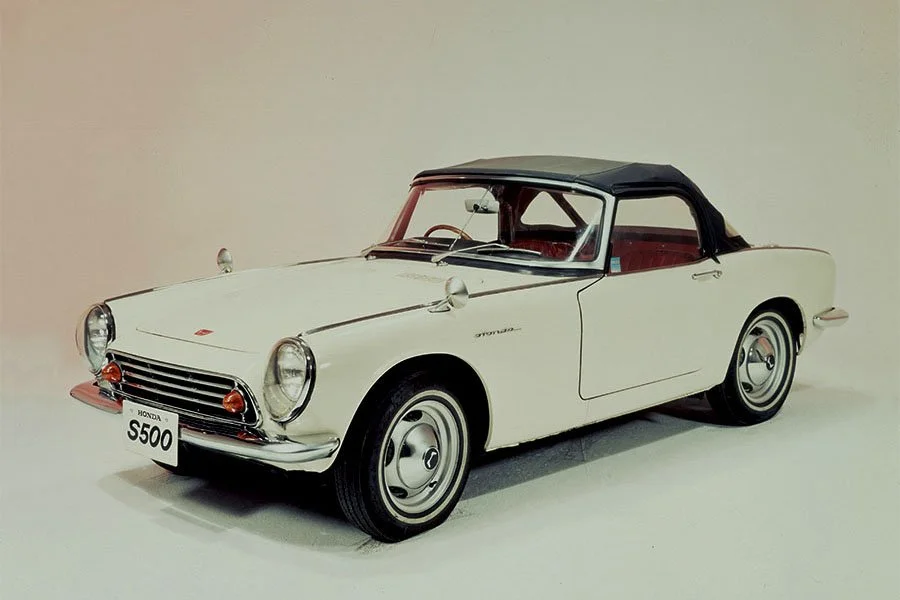Guide: Hirotoshi Goes Full Send - a Historical & Technical Appraisal of the Honda NSX 3.0 Mugen Prototype
/BACKGROUND
Mugen Motorsports was established in 1973 by Hirotoshi Honda, the son of Honda founder, Soichiro Honda.
Based in Asaka in the northern suburbs of Tokyo, Mugen initially offered tuning parts for Honda motocross bikes. The company soon expanded to go-fast equipment for the 1.2-litre engine used in the first generation Civic.
1983 proved to be a pivotal year; Honda moved back into Formula 1 as an engine supplier and launched its first really sporty model, the CRX.
To capitalise, Mugen started to produce aerodynamic body kits, sports exhausts, alloy wheels and uprated suspension components for the critically acclaimed CRX.
As the 1980s wore on, Mugen became the number one supplier of hop-up parts for Honda vehicles.
However, since the late 1960s (when he had started building a racing car in a workshop at his father’s house), Hirotoshi Honda’s goal had been to create his own model.
In January 1992, this dream came close to fruition when the Mugen NSX Prototype was unveiled.
Essentially a heavily modified version of the standard Honda NSX which had been launched in production-ready form at the Tokyo Motor Show in October 1989, Mugen’s prototype was uprated in practically every department.
CHASSIS
For type approval and cost reasons, the NSX’s state-of-the-art extruded aluminium bodyshell was retained in its original configuration.
New equipment included reinforced suspension and gas-filled aluminium dampers. There was also the Mugen Variable Suspension Control System (MVSC) which offered three different cockpit-adjustable damper settings.
The front ant-roll bar was beefed up as were all the suspension bushes.
Honda’s standard four-channel ABS system was carried over along with the OEM 282mm diameter ventilated discs. Racing brake pads were fitted for extra bite.
New Mugen M7 split rim alloy wheels measured 16 x 8.5-inches at the front (up from 15 x 6.5) and 17 x 9.5-inches at the back (up from 16 x 8). Rear track was widened by 30mm. The handsome seven spoke wheels were originally shod with Bridgestone Expedia tyres.
ENGINE / TRANSMISSION
Just like the NSX chassis, Honda’s high-revving all-alloy DOHC 90° V6 with its VTEC variable valve timing was regarded as one of the best bits of equipment in the business.
Mugen stuck with the original 2977cc displacement but altered the valve timing and fitted bigger valves and valve springs.
The compression ratio was increased from 10.2:1 to 10.5:1 and the ECU was re-mapped to optimise performance.
A completely new exhaust system was another special feature.
The result was an extra 50bhp with 320bhp now available at 8000rpm compared to 270bhp at 7100rpm for the production NSX.
Mugen retained the five-speed gearbox and small diameter twin-plate clutch from the standard NSX but did fit an uprated limited-slip differential.
BODYWORK
Cosmetically, Mugen really went to town; only the stock doors, roof, wing mirrors and bootlid remained. Everything else was completely new and made entirely from carbonfibre.
The front end was restyled to include re-shaped intakes, covered headlights and two large radiator cooling vents.
Down each flank were redesigned sills and bigger, boxier cooling ducts for the engine.
An exposed fuel filler cap replaced the concealed item on the standard car.
The rear fenders swept upwards to neatly integrate with the bootlid spoiler which was mounted a couple of inches higher than normal.
More rectangular vents were carved out from behind the rear wheels.
A full width rear bumper was installed above a large mesh grille which had an exhaust poking out at each corner. The rear apron was considerably deeper than usual and added to the aggressive new look.
Compared to the standard NSX, the Mugen derivative was 29mm shorter, 69mm wider and 16mm lower.
INTERIOR
The cockpit made extensive use of buckskin hide and carbonfibre.
Mugen fitted an aluminium roll cage, carbon fibre bucket seats with four point harnesses, Nippon Seiki gauges, drilled aluminium pedals, a Momo steering wheel and a custom shift knob.
There was no air-conditioning or stereo but the electric windows were retained.
WEIGHT / PERFORMANCE
Weight was reduced from 1370kg to 1280kg which represented a saving of 90kg.
Although no official performance figures were ever published, it seems likely that, with no artificial limiter in place, the Mugen NSX would have had a top speed in the region of 185mph and a 0-62mph time of under five seconds.
PRODUCTION
The blue prototype was later displayed at the Tokyo Motor Show in October 1992.
While some lookalikes do exist, it is not known if Mugen produced any actual replicas.
However, in 1993 Mugen made much of the performance equipment used in the prototype available to existing NSX owners. As the original carbonfibre body was not likely to prove a big seller on account of cost, Mugen introduced a range of new bolt-on cosmetic parts to include skirts, aprons and spoilers.
Text copyright: Supercar Nostalgia
Photo copyright: Mugen - http://www.mugen-power.com/english/
































